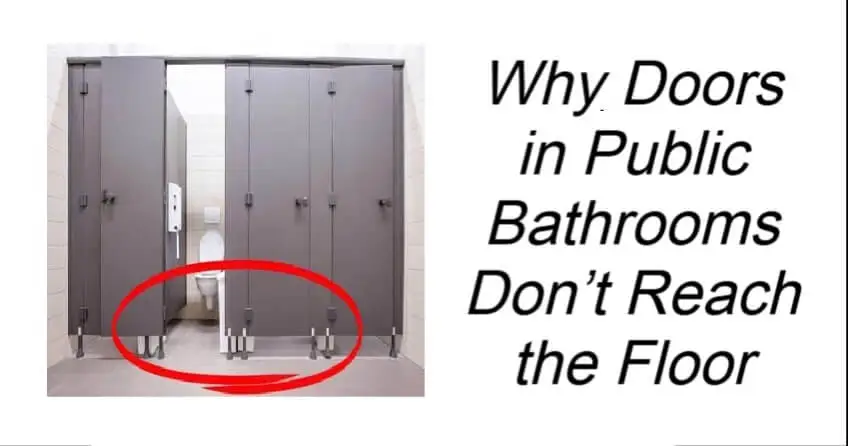Why Doors in Public Bathrooms Don’t Reach the Floor
Ever wondered why public bathroom doors don’t reach the floor? You’re not alone—and the reasons might surprise you.
We’ve all noticed it: those awkward gaps under public restroom stalls. While it might seem like a design flaw, there are actually several practical reasons for this choice:
1. Medical Emergencies Are Easier to Spot
If someone inside a stall is in distress or unconscious, the gap allows others to notice and get help quickly.
2. It’s Easy to See If a Stall Is Occupied
No more awkward door jiggles or knocking—just a quick glance underneath lets you know if a stall is in use.
3. Better Ventilation
That space helps odors dissipate more quickly, making for a (slightly) fresher restroom experience.
4. They’re More Cost-Effective
Partial doors are cheaper to install and maintain compared to full-length ones.
5. Discourages Misuse
The openness makes it harder for people to engage in inappropriate or unsafe behavior unnoticed.
6. You Can Escape a Jammed Lock
If the lock fails, you can crawl out under the door rather than being trapped inside.
7. Forgot Toilet Paper? You Can Ask for Help
We’ve all been there—thanks to the gap, you can ask a neighbor to pass some along.
8. Speeds Things Up
People tend to spend less time in restrooms with partial doors, keeping lines shorter during busy times.
9. Easier for Custodians to Clean
Cleaning staff can quickly mop or spray the floor without opening each stall.
10. Prevents Flooding
In case of a plumbing issue, water can flow out more easily rather than pooling in a stall.
Bonus: Why Do Bathroom Doors Usually Open Inward?
There’s some logic to that, too:
- Safety first – You won’t accidentally hit someone in the hallway.
- Emergency access – You can block the door from inside if the lock fails, but it’s much harder to be locked out.
- Smell containment – It helps keep odors from spreading into common areas.
- Clearer pathways – In crowded or narrow restrooms, inward doors prevent blockage in walkways.
So, next time you’re in a public restroom, you’ll know that those design quirks actually serve some very practical purposes!
You’ve just read, Why Doors in Public Bathrooms Don’t Reach the Floor. Why not read Manager Had To Hire A New Employee.

